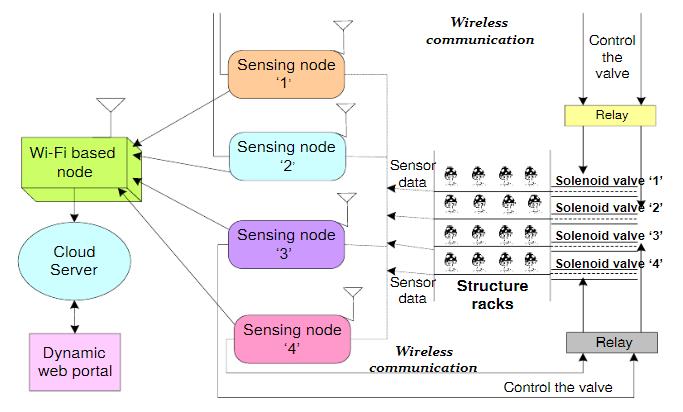Cordyceps sinensis - also known simply as Cordyceps, is an edible mushroom abundantly found in the Himalayan Mountain Range. Sought after by many, this ancient traditional medicine acts as a remedy for cancer restraint, depression, high blood pressure, asthma, respiratory disease, and lots more. However, this mushroom is limited to growing within a specific region.
Why Cordyceps?
What is Cordyceps sinensis exactly? Well, it is actually a combination of a caterpillar and a fungus only available at altitudes higher than 4 500 meters. So how would a sensory and monitory-based system help grow a mushroom that likes cold and heights in areas less favorable?
A research team from Uttaranchal University in India felt that a study is needed for educational purposes explicitly revolving around the strict requirements to cultivate this mushroom in a different region. A graphical user interface (UI) will be embedded into this IoT, differentiating this study from those before it. Integration of big data with the Internet of Things (IoT) framework will be done, also constructing a web portal that will visualize mushroom processing in real-time. All very high tech I’m sure you’ll agree!

Problems growing Cordyceps commercially
So why is it so difficult to cultivate these mushrooms? The growth pattern can be divided into two phases namely the vegetative phase and the regenerative phase. The initial growth of Cordyceps sinensis is performed by permitting mycelium culture to grow on sterilized cereal grains, producing spawn. This spawn is then inoculated into a substrate, allowing the mycelium to grow and develop throughout the substrate - termed a spawn/production run. The optimal temperature is 25 °C for the production run. Now, what kickstarts the growth of Cordyceps sinensis is the sudden dramatic drop in temperature (between 5 to 10 °C) and carbon dioxide (CO2). Knowing when this dramatic drop is needed is crucial in allowing the growth of Cordyceps sinensis.
The proposed study/research
The research team will use a compilation of soil and environment sensors to monitor the conditions within the cultivation house around the clock. The sensors will then provide real-time analytics to a mobile app that the farmer can use to check on his mushrooms’ condition. The app will also send alerts to the farmer when the sensors pick up a deviation in the overall state of the environment.
The soil monitor will check the pH, nutrient concentration, and moisture content of the soil. It will also have a GPS sensor to check positional data. Whilst the environmental sensor will be in charge of monitoring the rack structure where the mushrooms are grown on. The sensors will check for humidity, temperature, and CO2.
Appropriate management practices will take place based on the results obtained by the sensors, including systems like water supply. Also updating the Wi-Fi-based node if any changes have indeed occurred. Below you can see a detailed sketch created by the team putting the idea into a visual perspective.

Due to the mushrooms’ high demand, many want to cultivate them right from their backyard. Unfortunately, there is a lack of in depth studies predicting, monitoring, and managing its life cycle, specifically with an IoT-enabled framework. This study specifically proposed to implement an IoT framework-orientated solution that differs from its predecessors.
If you want to read the proposed research and study for yourself you can do so here at the ResearchGate website. Congratulations to the team at Uttaranchal University including some of the authors of the study Minakshi Memoria and Harishchander Anandaram.
Have you tried growing Cordyceps?
Any thoughts on this study to monitor the Cordyceps mushroom lifecycle and to enhance its chances of being cultivated elsewhere? Maybe you’ve grown Cordyceps at home before on a small scale - why not leave us a comment below! 👇👇👇

